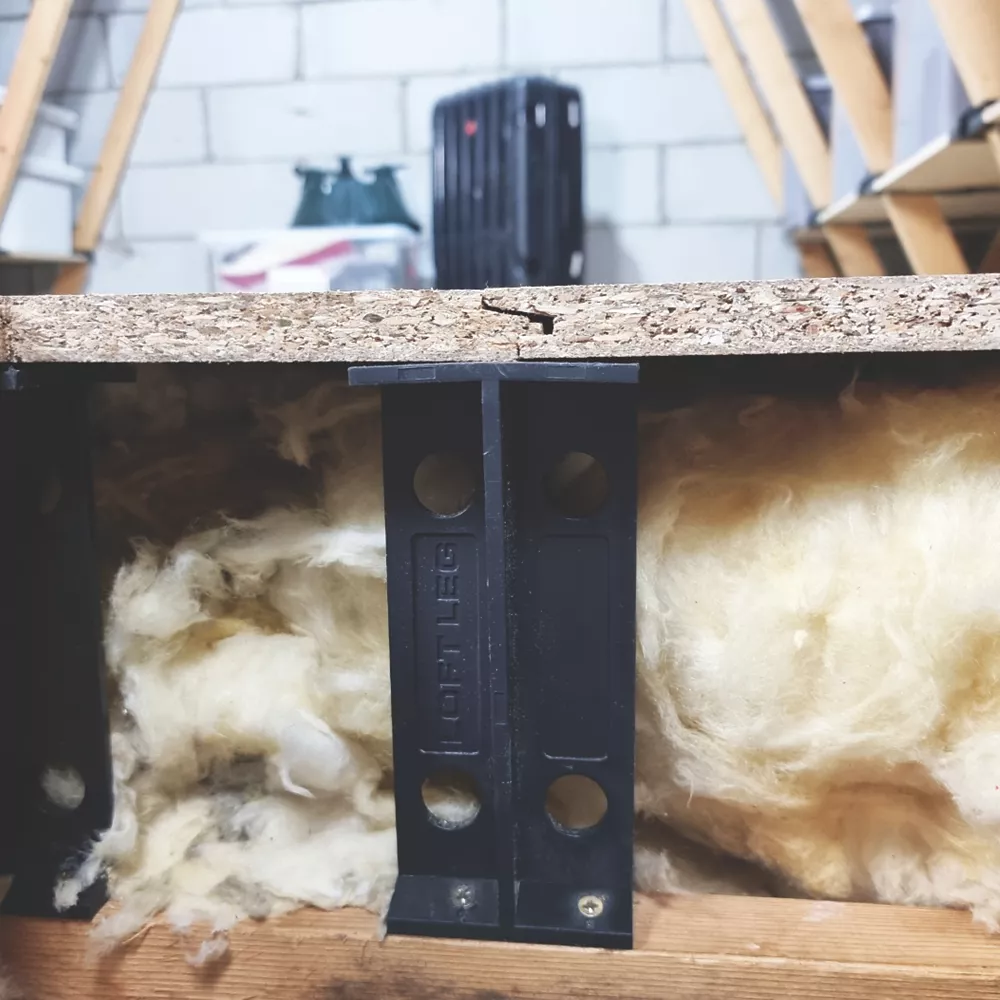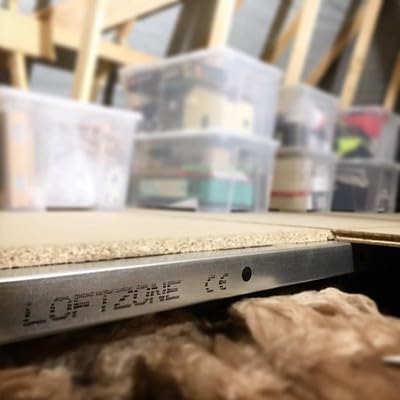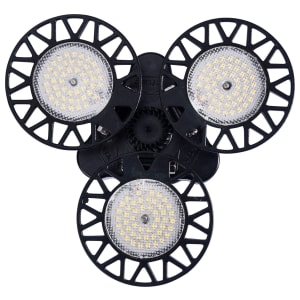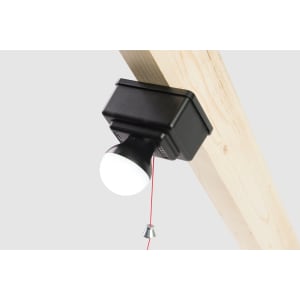Why taking a practical approach to your loft storage ideas is essential to avoid damaging your home and belongings
Loft storage ideas can help turn your unused attic into a more valuable space, as long as you follow these practical steps first
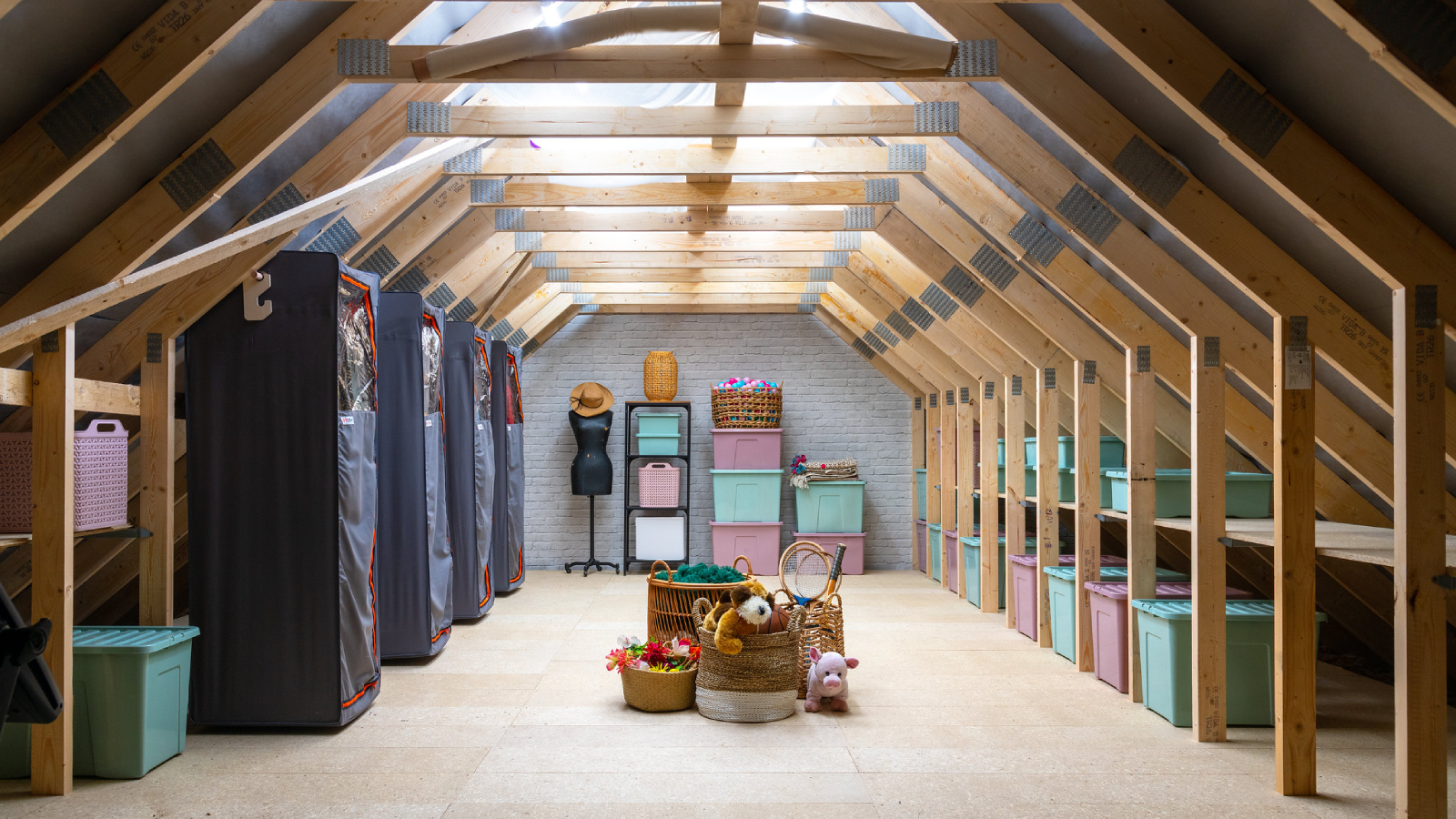
- 1. Assess if your loft is suitable
- 2. Consider what you want to store, and if it will fit
- 3. Board your loft for best use of space
- 4. Add shelves to the roof trusses for extra storage
- 5. Keep items clean and dry with storage boxes
- 6. Install hanging wardrobes for extra clothes storage
- 7. Don't forget to light your loft
- FAQs
Unless you're considering extending upwards, the chances are you view your loft as a suitable space for storing items that aren't needed on a regular basis. However, getting your loft storage ideas right means getting the practical elements in place first.
Why? Because the reality is that without the correct basic infrastructure in place, you risk turning your loft into a storage nightmare, where belongings become damaged and your loft is rendered unusable.
So, before you start filling your loft with clutter, follow these seven steps that the experts recommend for getting your loft storage ideas right, and your belongings well protected.
1. Assess if your loft is suitable
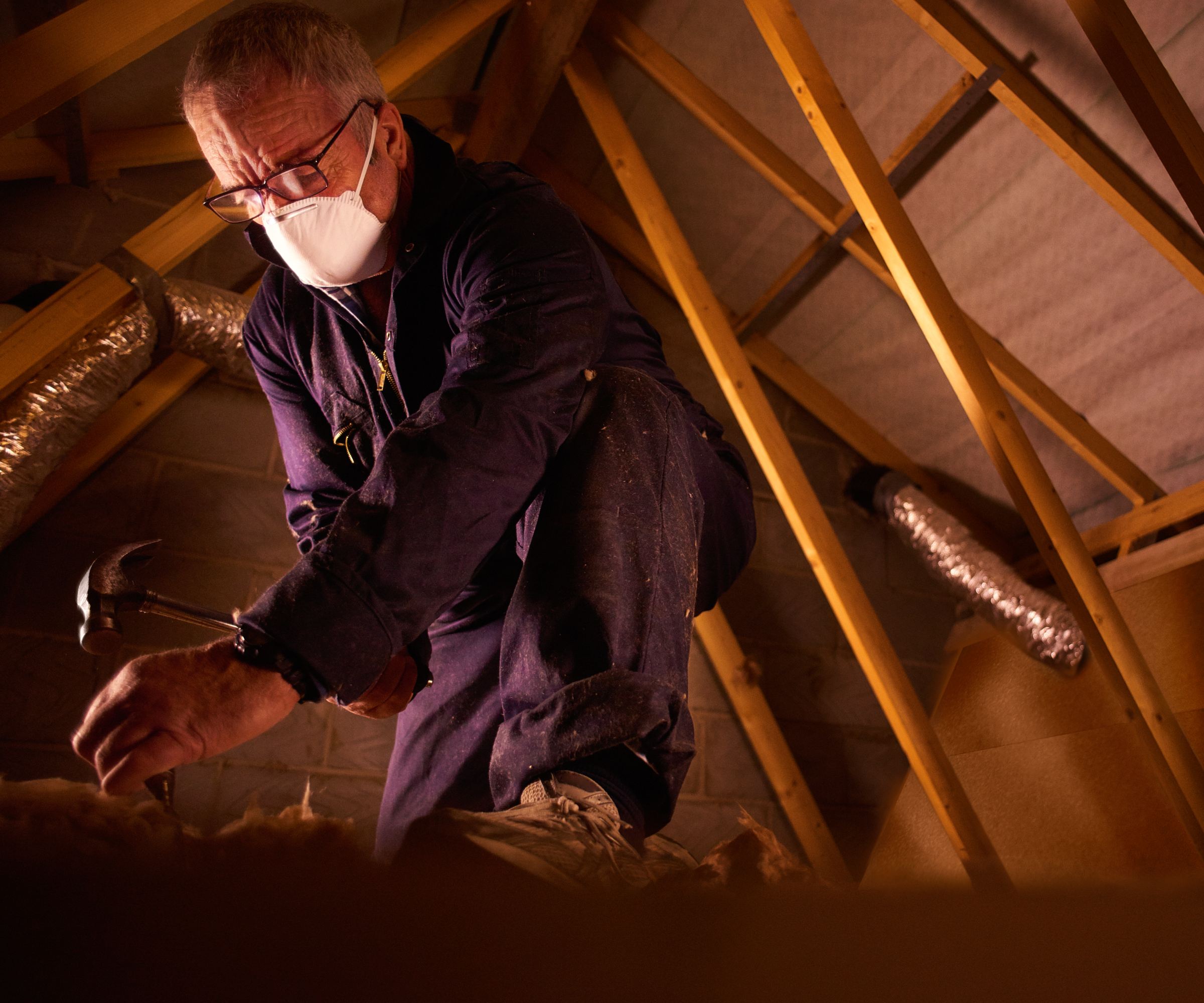
Before you even start searching the internet for loft storage ideas, heating expert and CEO of LoftZone, Dave Raval, recommends that you: “first, you need to check the condition of the loft to ensure it’s dry, free of pests, and structurally sound."
Next you'll need to consider if it's strong enough to store items and still be strong enough for you to walk on with the weight of any items you add.
"While most lofts are suitable for light storage and occasional access, it is recommended not to exceed a load of 25kg per square metre," recommends Gareth Storey, director at Loft Leg Ltd. "Modern homes are typically constructed to support the weight of an average adult along with this additional storage load, ensuring safety and structural integrity. However, if there are structural concerns or uncertainties, it is recommended to consult a structural engineer before proceeding," he says.
Next, you should assess your insulation. "The UK government recommends a minimum of 270mm of loft insulation to achieve a U-value of 0.16 W/m²K," explains Gareth, "which ensures energy efficiency."
Bring your dream home to life with expert advice, how to guides and design inspiration. Sign up for our newsletter and get two free tickets to a Homebuilding & Renovating Show near you.
"Lift a few boards and inspect underneath," says Dave. "If the insulation is squashed, or below 270mm, it’s likely not performing as well as it should, and could be costing you more on bills. Older boarding that sits directly on joists can also be a red flag" he notes, "as it often compromises insulation and loft ventilation."
"It’s important that we don’t squash the insulation with boards directly on the joists, or with belongings," he explains, "as this reduces energy efficiency and can cause damp issues."
And finally, take a look at your available head height. Storing items is handy – as long as you can access them without injury.
"While full headroom isn’t essential for light storage, you should be able to move safely and access stored items comfortably," agrees Gareth. If head height is limited, "some homeowners board only part of the loft around the loft hatch," he says, "while others opt to board the entire space, depending on the available height and intended use."

Dave Raval is heating and insulation expert, as well as CEO of LoftZone. As the Chief Executive of LoftZone, which started in 2012, he has been leading the commercialisation of new technology that saves energy, improves homes, and reduces carbon emissions. Alongside LoftZone’s installers, LoftZone have fitted our products into over 100,000 properties worldwide, winning awards and recognition from the Carbon Trust, Mayor of London, Citizens' Advice Bureau and the Ideal Home Show. Dave and LoftZone is also a part of the National Warm Homes Council, which has been set up to support innovative SMEs engage with Government in delivering warmer homes in the UK.
Gareth Storey is a Director at Loft Leg Ltd, a company that design and manufacture innovative loft storage solutions to ensure homeowners can have bright, organised and energy efficient lofts. The Loft Leg has become an industry standard for raising loft storage platforms and is trusted by energy companies, professional insulation installers and home owners throughout the UK.
2. Consider what you want to store, and if it will fit
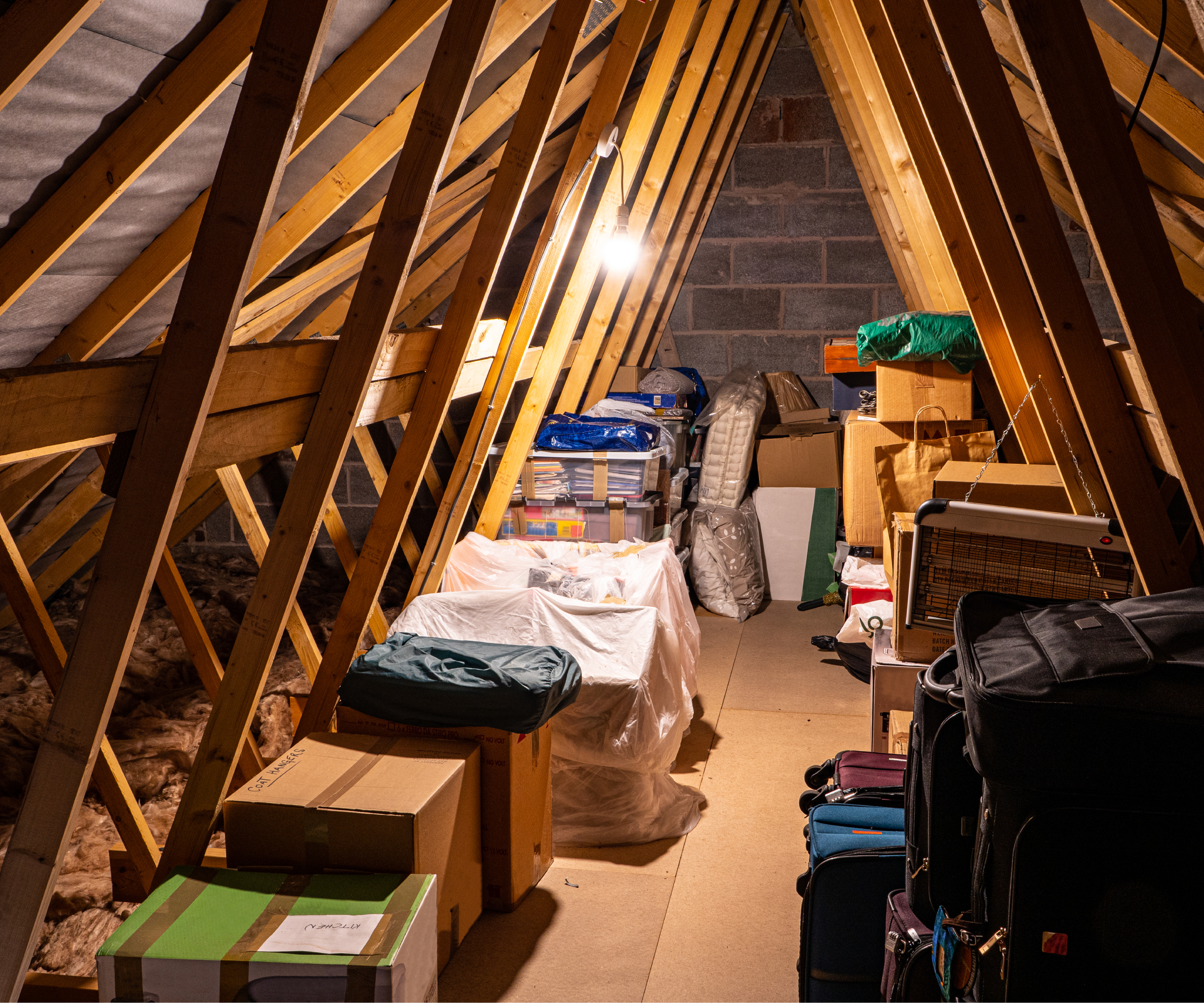
Just as when planning out any kind of storage space within your home, once you've established your attic is suitable for loft storage ideas, begin by thinking how much space you actually need to keep your belongings safe, clean and dry, and think about how often you will need to gain access to them too.
The first question you need to ask yourself is what you need to store in your loft and how you want the space as a whole to work. For example, if you simply want your loft to provide somewhere for a few bits and bobs that you rarely need, you may not need to look at converting the whole of your loft into storage.
Creating a list of all the items you need to store will help you work out where to start and the best type of loft storage ideas for your needs. In understanding what it is you want to store, you'll then be able to look at the available space you have and cover off some of the more practical elements such as:
- Is your loft hatch opening big enough to store the items you want, or would garage storage ideas be a more suitable choice for bigger belongings?
- Is your loft ladder suitable for regular use and in line with building regulations?
- Do you have much head height in your loft or will you only be able to store items in the eaves and at floor level?
- What else is in your loft? Do you have a water tank or plan to put a boiler in the loft?
- Will you need access to some of the items more regularly which will potentially impact where and how you store items?
3. Board your loft for best use of space
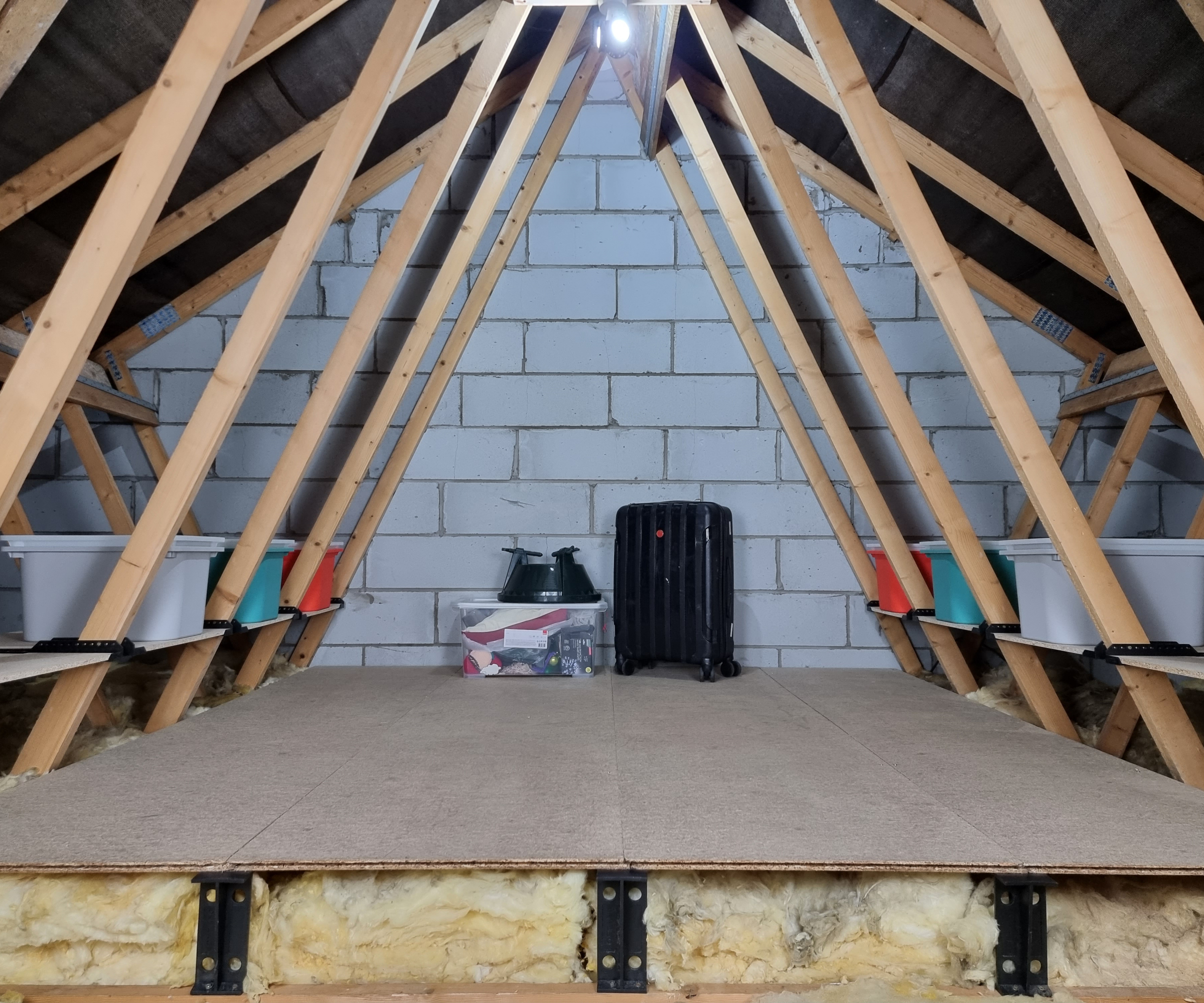
If you haven't already investigated how to board a loft, now is the time to either call in the professionals or consider tackling it yourself. A flat surface is essential for your loft storage ideas and boarding your loft correctly is the most practical way to achieve this.
While we'll come onto loft storage ideas fusing roof trusses next, having a central space in the centre of your loft will provide somewhere safe to walk, and extra space for storing boxes, bags and taller items that may not fit under the eaves.
However, in order to prevent issues with condensation in the loft, or reduced energy efficiency in your home, it's not simply a case of popping a few boards down and hoping for the best.
Instead, "to preserve the effectiveness of the insulation, create a raised floor above it using products such as Loft Legs," says Gareth Storey. "These are easily fixed onto the joists or trusses in a grid formation, allowing raised loft flooring boards to be laid without compressing the insulation."
"Compressing loft insulation will massively reduce the amount of air trapped in the quilt," he explains, "which will reduce its thermal efficiency by up to 50%."
Alternatively, opt for a solution such as LoftZone’s StoreFloor system which is also super easy to install and protects the full depth of insulation allowing maximum heat efficiency, and turning your space into a functional storage area.
Use these products for your loft storage ideas
4. Add shelves to the roof trusses for extra storage
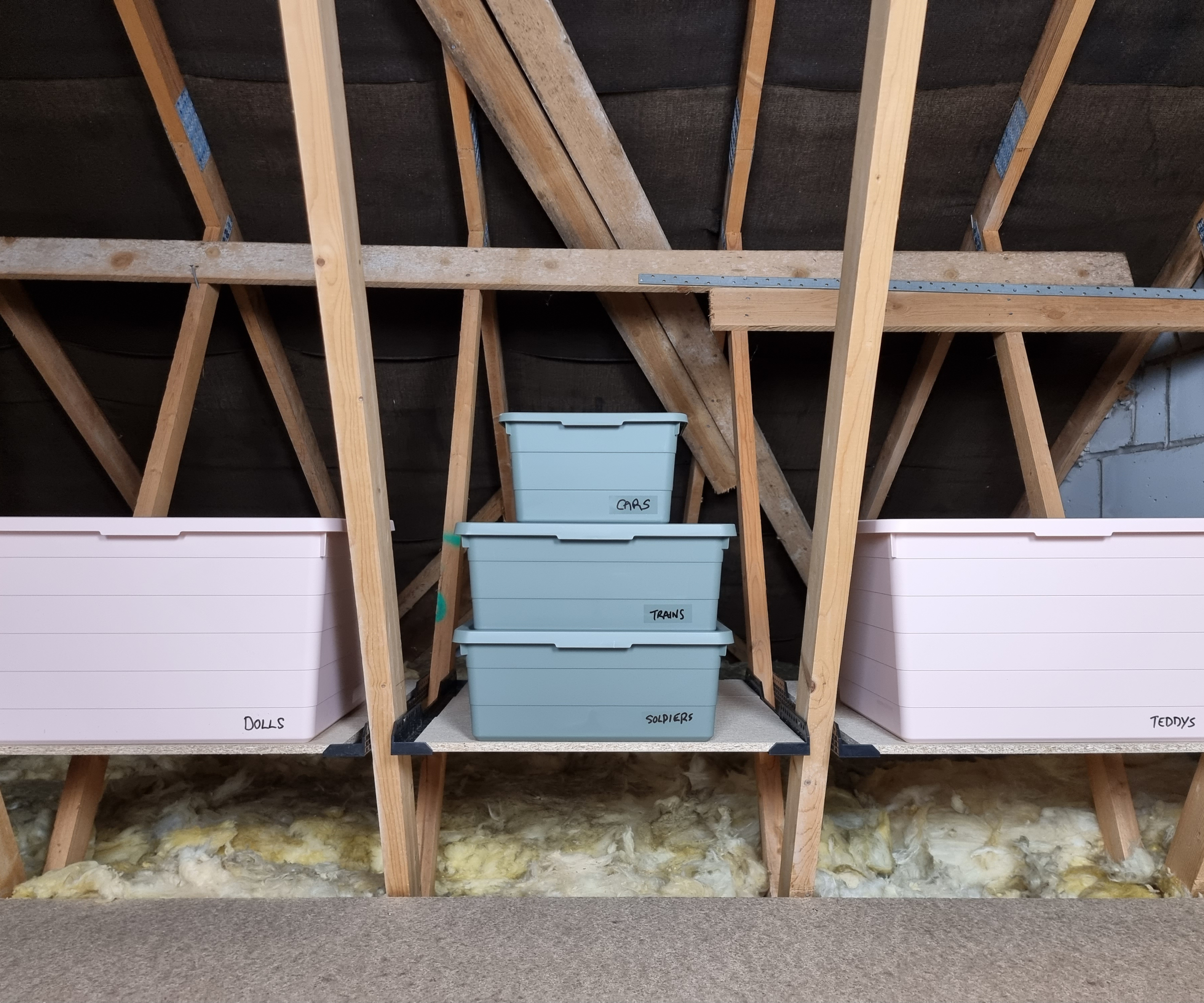
Rather than just ramming in boxes and bags and hoping for the best – something which can compromise or damage insulation – look for smarter solutions when it comes to making the most out of your loft storage space.
"For properties with a trussed roof, products such as the Loft Ledge are an ideal solution," says Gareth Storey. "It provides additional shelving by making use of space between the trusses."
At LoftZone, Shelf-Beam kits in both wood and metal are also available. "They’re lightweight but strong, and you can mount them between or across beams, depending on your layout," says Dave Raval. "It’s all about easy, flexible storage."
You can buy Loft Ledge kits from Wickes.
5. Keep items clean and dry with storage boxes
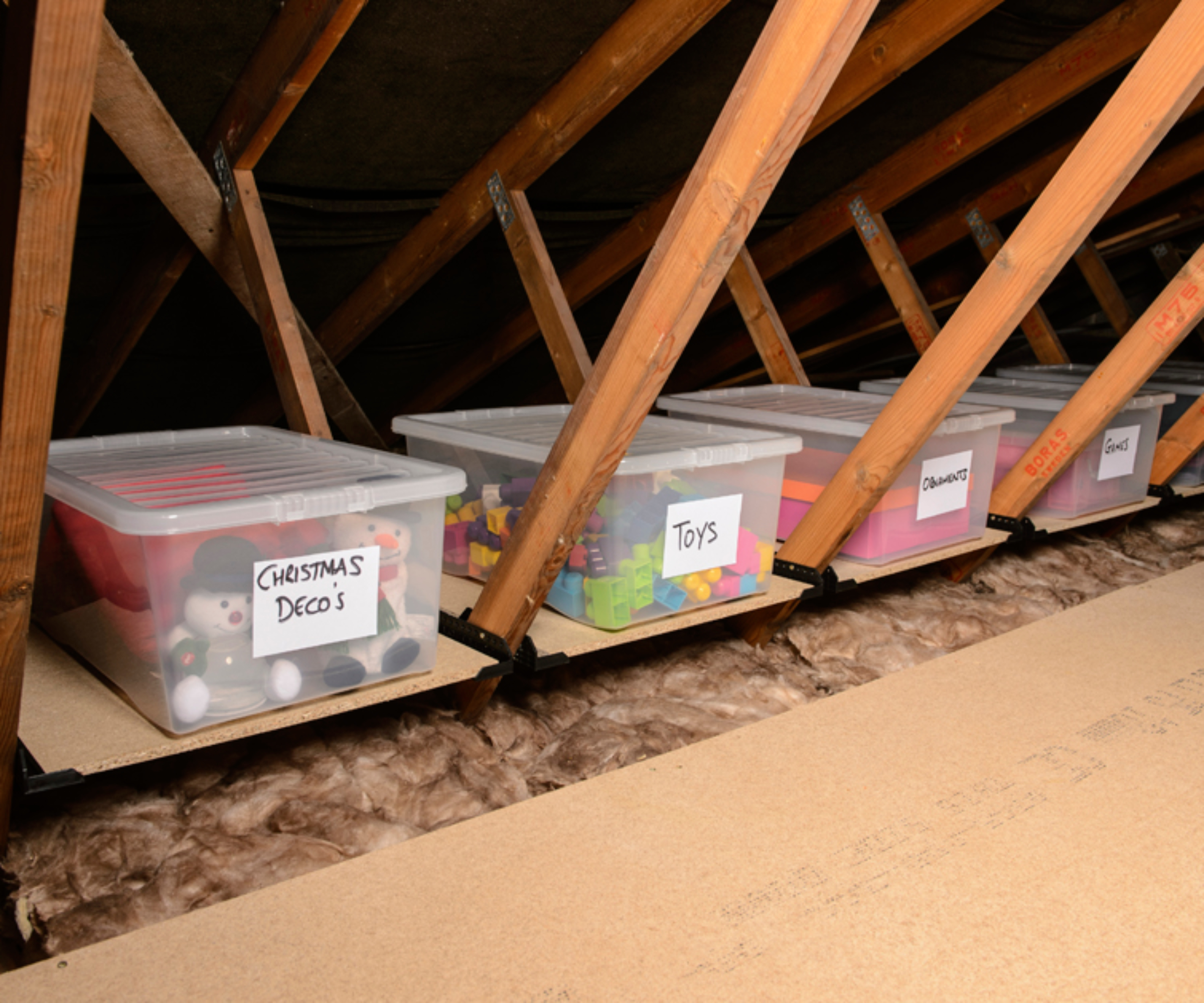
If you plan on using your loft as a space to store you precious belongings that you don't need access to on a day-to-day basis, then you must ensure the containers you keep them are up to the job of keeping out moisture, dirt and dust and are strong enough to withstand being stacked on top of one another too. Relying on old carrier bags and cardboard boxes just won't provide the protection require long-term.
Look for water-resistant storage boxes that are completely watertight (just in case of roof leaks), and choose those that can withstand temperatures from -40°C to 70°C.
Clear boxes can provide a good view of whats inside, or opt for coloured ones that can be clearly marked and labelled. Purchasing a variety of sizes will also ensure you have a space for everything, and can also make moving them around far easier.
Top tip – don't forget to measure your loft hatch size before you buy any storage boxes to ensure you can fit them through the opening.
For a wide range of clear plastic storage boxes in a range of sizes check out the options on offer at Amazon.
6. Install hanging wardrobes for extra clothes storage
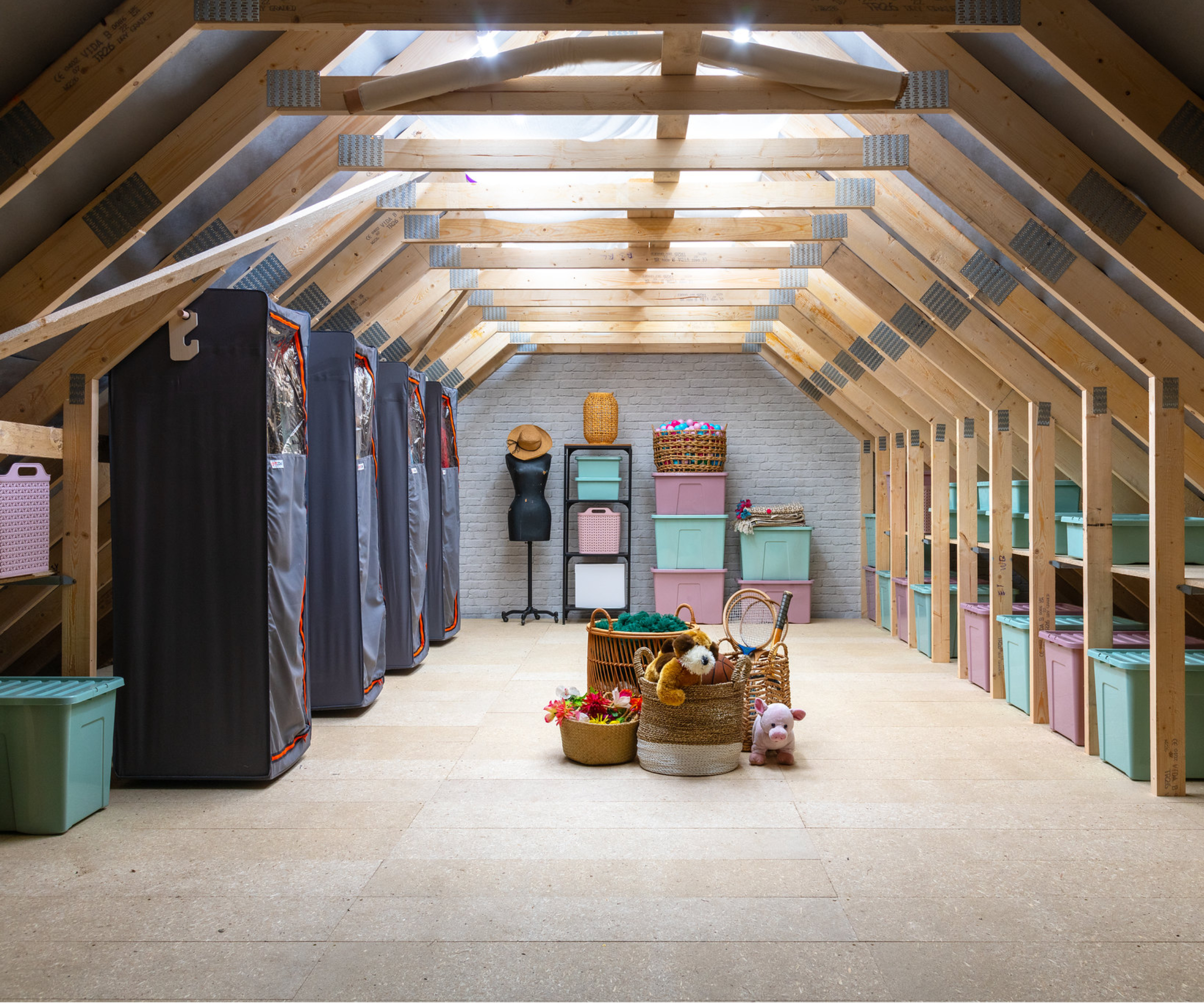
If you're keen to include clothes in your loft storage ideas and have enough height to hang items, rather than keeping them folded in boxes, this too is possible, but with one caveat say the experts.
"You can hang rails between the roof trusses or add custom-built wardrobes into the eaves, but always be cautious about weight," warns Dave Caval. "If you’re planning to hang or store heavy items, you may need advice from a structural engineer or qualified installer."
Building furniture in your loft can also be tricky, so for a more flexible and lightweight solution, Dave suggests an option such as the company's Loft Wardrobe. "This is a breathable fabric wardrobe that hangs between your trusses or from the rafters," he explains.
"It’s great for seasonal clothes, keeping them clean, dust-free and crease-free, and the rigid base means shoes and other items can go in too. It’s a clever way to make the most of loft space without compromising on protection or accessibility."
7. Don't forget to light your loft

Last, but not least on our list of loft storage ideas is of course making sure you use the correct lighting. A must in loft spaces where natural light is unlikely, making sure you install the best lighting is important – not just from a practical point of view, but for safety reasons too.
Assessing which light suits you best will depend on if you have wiring in place to install a mains powered light, or if you need a rechargable option that you can easily remove and charge as required. It's also a good idea to have a torch stored in your loft, just in case you ever experience a power cut while accessing your loft storage.
Try the following lights for a good range of bright coverage making sure those dark corners are perfectly illuminated.
Lights to illuminate your loft storage ideas
FAQs
Are there items not suitable for loft storage ideas?
Although it could be tempting to pop everything into the attic once your loft storage ideas are in place, it's still wise to proceed with caution say the experts.
"Avoid storing anything heat-sensitive, perishable, or valuable. The temperature in lofts can change between seasons," says Gareth Storey. "Items like candles and electronics can also degrade."
"Items that are sensitive to humidity, dust, or temperature extremes, such as delicate fabrics or perishable goods should always be treated with caution," adds Dave Caval.
Do I need planning permission to add loft storage ideas in my attic?
"No, planning permission or Building Regulations are not required for adding loft storage," says Gareth Storey, "provided you are not altering the roof structure or using the loft as a habitable room."
Will installing loft storage ideas be expensive?
"Installing loft boards and shelving are both relatively low-cost projects – particularly if you complete the work yourself," says Gareth Storey. "A typical project will only cost a couple of hundred pounds. It is significantly more cost-effective than long-term use of a self-storage unit and offers a permanent storage solution within your home."
Costs will vary depending on the size of your loft, what you want to install, and whether you want to do it DIY or have it professionally installed via an approved installer," expands Dave Caval.
"A typical (10m2) LoftZone raised boarding installation costs a few hundred pounds when done on a DIY basis or around £750 if installed by a professional. LoftZone’s loft shelving for example costs tens of pounds and our wardrobes are cheaper than IKEA cupboards," he adds. "Overall, compared to building an extension, using self-storage, or moving house for more storage, these are all very cost-effective upgrades."
The experts' final tips for loft storage ideas? Be organised and keep it simple says Gareth Storey:
- Use sturdy, stackable storage boxes
- Clearly label all containers
- Keep a ledger or inventory to track stored items
- Group similar items together (e.g. seasonal décor, sporting equipment)
- Store the most frequently accessed items near the loft hatch
And for specific items, use the following suggestions, says Dave Caval:
- Clothes: Use vacuum-sealed bags to save space and protect from dust
- Documents: Store in watertight plastic containers as paper doesn’t like humidity
- Sports kit: Clean it first, then store in breathable bags or bins
- Luggage: Stack them inside each other and fill with lighter items
- Christmas decorations: Use compartmentalised boxes and label clearly
Need some more advice to get your attic ready for your loft storage ideas? Find out how to insulate a loft yourself and make sure you don't forget to follow the correct procedure for insulating a loft hatch too, to keep your house warm and your items out of the cold.

Sarah is Homebuilding & Renovating’s Assistant Editor and joined the team in 2024. An established homes and interiors writer, Sarah has renovated and extended a number of properties, including a listing building and renovation project that featured on Grand Designs. Although she said she would never buy a listed property again, she has recently purchased a Grade II listed apartment. As it had already been professionally renovated, she has instead set her sights on tackling some changes to improve the building’s energy efficiency, as well as adding some personal touches to the interior.
